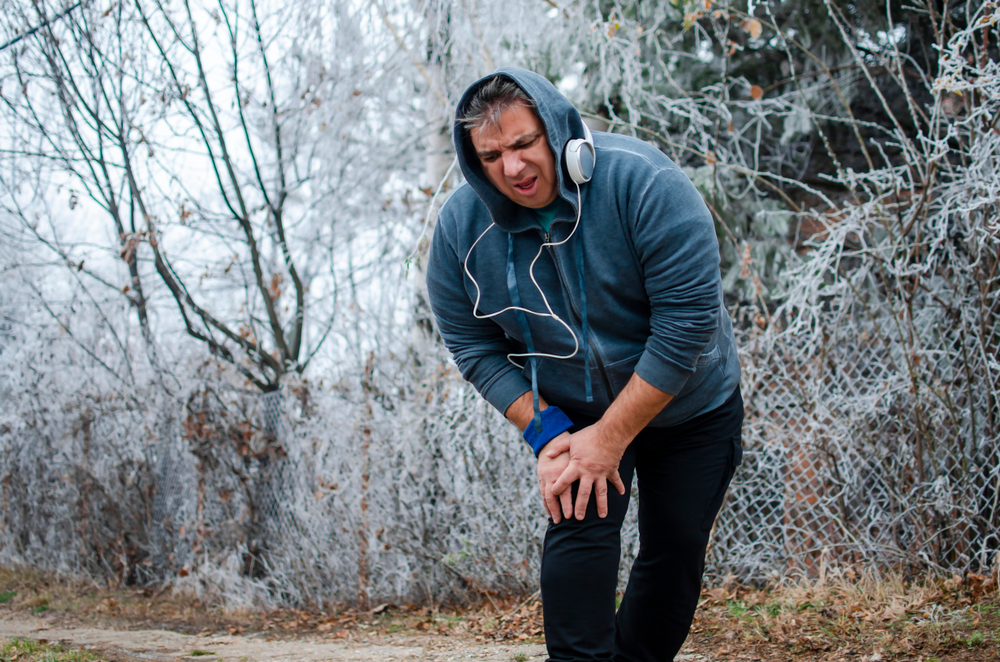
On Long Island, we’re still battling through the bitter cold of winter. As most of us know, this is a season that can burden us with significant orthopedic challenges. As a Long Island orthopedist, we treat several injuries caused during winter. Between ice, snow, shoveling and car accidents, winter is a time for everyone to exercise caution to avoid injury.
Many of our patients with knee injuries realize that during winter, their knee pain seems to change with the weather. Orthopedic injuries shifting with the season is not as unique as you may believe. Incidentally, knee injuries (and sometimes strain injuries) are particularly susceptible to changes as the weather stays cold.
Below, we’ve gathered information regarding the effects of cold weather on knee injuries. You’ll find out what causes these changes, the knee injuries at risk and strategies for pain relief. Keep reading for more information!
1. What Causes It?
When it comes to cold weather knee pain, there are several factors that contribute to the changes.
1. Barometric Pressure: This is the primary factor that leads to winter knee pain. Essentially, barometric pressure describes the very weight of the air surrounding us. Right before cold weather arrives, the air’s barometric pressure plummets. Consequently, the fluids and gases within your knee’s joints begin to expand. This leads to an unpleasant feeling of pressure on your nerves, which is what causes the pain.
2. Cold & Humidity: When lower temperatures and higher humidity combine, it can induce significant pain in your knee. The combination of these two factors influence the cellular structures of bone and cartilage. As a result, it can cause a feeling of expansion and contraction, which creates unpleasant pressure.
3. Nerve Sensitivity: Many orthopedic patients with knee injuries experience symptoms like inflammation, adhesions or scarring. With any of these, they usually have sensitivity within their nerves. The nerves in knee joints become increasingly sensitive when it’s cold outside, and the lower temperatures can agitate that sensitivity.
4. Thickening of Joint Fluids: The fluid within our knees serves an important purpose – to essentially absorb shocks and impact. When temperatures drop, the fluid in knees can begin to thicken. As a result, this increase in thickness inhibits the free flow of fluids, which in turn makes the knee’s joint stiffer.
5. Inactivity: Naturally, during the cold and dark winter months, we tend to remain indoors and dormant for longer periods of time. It’s harmful to the health of our joints to remain inactive. For seniors, there are several proven ways to stay active during the winter. The joints within our knees can suffer (and hurt) after periods of laziness.
2. Which Knee Injuries Are Susceptible?
With specific knee injuries, the cold weather is much more likely to inspire pain.
Knee Trauma: If you experienced a knee injury in the past from trauma or impact, then the muscles surrounding your knee were affected. During colder months, the temperature drops and your affected muscles have to work much harder. In warmer weather, they don’t have to exert the same amount of energy and effort to complete the same tasks. Consequently, this can lead to more muscle and tissue damage, which causes increased pain.
Patellar Tendonitis: This injury is commonly referred to as “jumper’s knee.” It’s usually between the kneecap and thigh muscles to the shin bone. The pain is concentrated directly below the kneecap. When jumping or climbing stairs, it causes weakness and stiffness. Cold weather leads to stiffer tendons and reduced circulation, which can make the pain from this injury much worse.
Runner’s Knee: During long periods of running, pressure is put on the knee joints, which leads to this injury. In many cases, some body-taxing jobs can cause runner’s knee. The kneecap impacts the thigh bone, and the result is cartilage damage. In cold weather, the tissues and muscles surrounding the knee get stiff, which leads to aches and pain.
3. Pain Relief
There are some ways for you to reduce your knee pain. You can always try out natural remedies, or do one of the following:
Stay Warm: This is a nice, pleasant and simple way to ease your cold weather knee pain. You can take nice, hot showers and baths, sleep with an electric blanket, and make sure to keep the heat going. If you have to leave your house, try to warm up your car before you have to hit the road. Additionally, you can dress in layers for some extra heat.
Combat Swelling: Essentially, with the vast majority of knee injuries, swelling is the primary cause of pain. Compression bands are an exceptional tool to reduce swelling and improve stability.
Conclusion
If you’re experiencing knee pain of any kind, you should contact Central Orthopedic Group today. Our leading Long Island orthopedists can assess your injury and come up with a treatment strategy to help heal your injury and ease your pain.
